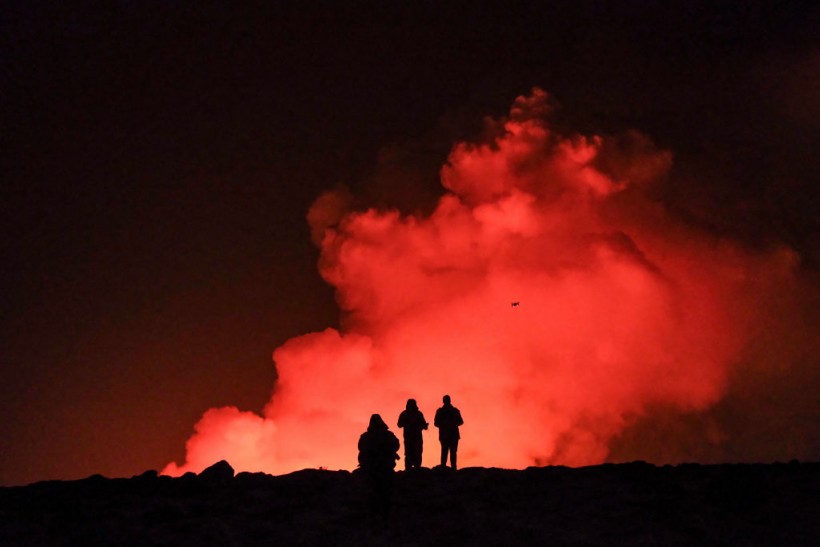Scientists have uncovered a river of magma flowing beneath a quiet Icelandic fishing village, sparking a state of emergency in the region.
The discovery, made late last year, has sent shockwaves through the scientific community and raised concerns about the reawakening of volcanic activity in the area after centuries of dormancy (via Phys.org).

TOPSHOT - A group of people observes molten lava and billowing smoke pouring out of a fissure during a volcanic eruption near Grindavik, western Iceland on February 8, 2023. A volcanic eruption started on the Reykjanes peninsula in southwestern Iceland on Thursday, the third to hit the area since December, authorities said. (Photo by Kristinn Magnusson / AFP) / Iceland OUT
Magma River Emerges Underneath Icelandic Village
The village of Grindavik, nestled on Iceland's western Reykjanes peninsula, found itself at the epicenter of this geological phenomenon.
What began as a series of volcanic fissures erupting since December escalated dramatically when authorities declared a state of emergency due to lava damaging crucial infrastructure.
Before 2021, the Reykjanes peninsula had not witnessed any volcanic eruptions for a staggering 800 years, hinting at the dormant nature of the region's geological activity. However, recent events have shattered this calm, with the discovery of a mammoth magma flow beneath Grindavik sending tremors of uncertainty throughout the area.
According to a study led by Freysteinn Sigmundsson from the University of Iceland's Nordic Volcanological Centre, the magma flow beneath Grindavik reached unprecedented levels. Flowing at a rate of 7,400 cubic meters per second, the magma surged through a 15-kilometer-long and 4-kilometer-high underground "dyke," dwarfing any previous measurements in Iceland or elsewhere.
To put this into perspective, the magnitude of the magma flow rivaled that of major rivers like the Danube or Yukon, highlighting the sheer force and intensity of the geological activity unfolding beneath the surface.
This rapid and powerful magma flow not only triggered significant eruptions but also led to a series of earthquakes and ground uplifts, causing extensive damage to the region's infrastructure.
Read Also: Massive Forest Fires Claim 112 Lives in Chile, 1,600 Left Homeless
State of Emergency Declared
The threat posed by the ongoing volcanic activity has forced repeated evacuations of Grindavik and neighboring facilities, including the Svartsengi power plant and the renowned Blue Lagoon geothermal spa. The long-term viability of these areas now hangs in the balance as scientists grapple with the uncertainty surrounding future eruptions.
Despite the challenges, researchers remain determined to unravel the mysteries of this geological phenomenon. By utilizing seismic measurements and satellite data, they aim to gain deeper insights into the driving forces behind the magma flow and its implications for volcanic activity worldwide.
The study also sheds light on the formation of giant dike swarms, emphasizing how even minimal pressure underground can trigger massive magma flows with astonishing speed. These findings not only advance our understanding of volcanic processes but also underscore the urgent need for effective hazard mitigation strategies in vulnerable regions.
As the residents of Grindavik prepare for the threat ahead, one thing is sure: the shocking discovery of a magma river flowing beneath their village has permanently altered the landscape of Iceland's geological history.
Stay posted here at Tech Times.
Related Article: Fagradalsfjall Volcano Strikes Again: Uncertainty Grips Grindavík as Eruption Disrupts Lives










